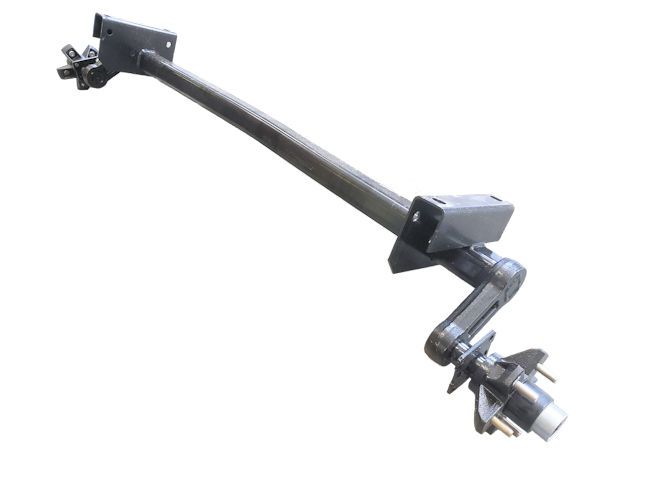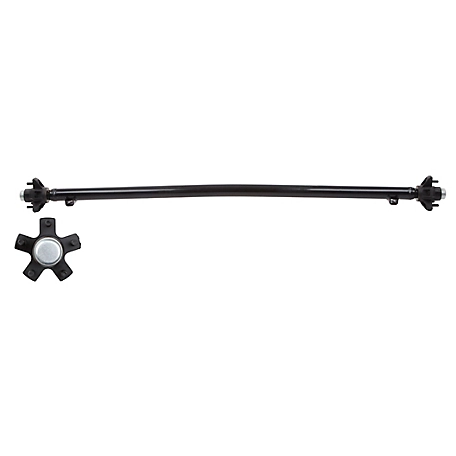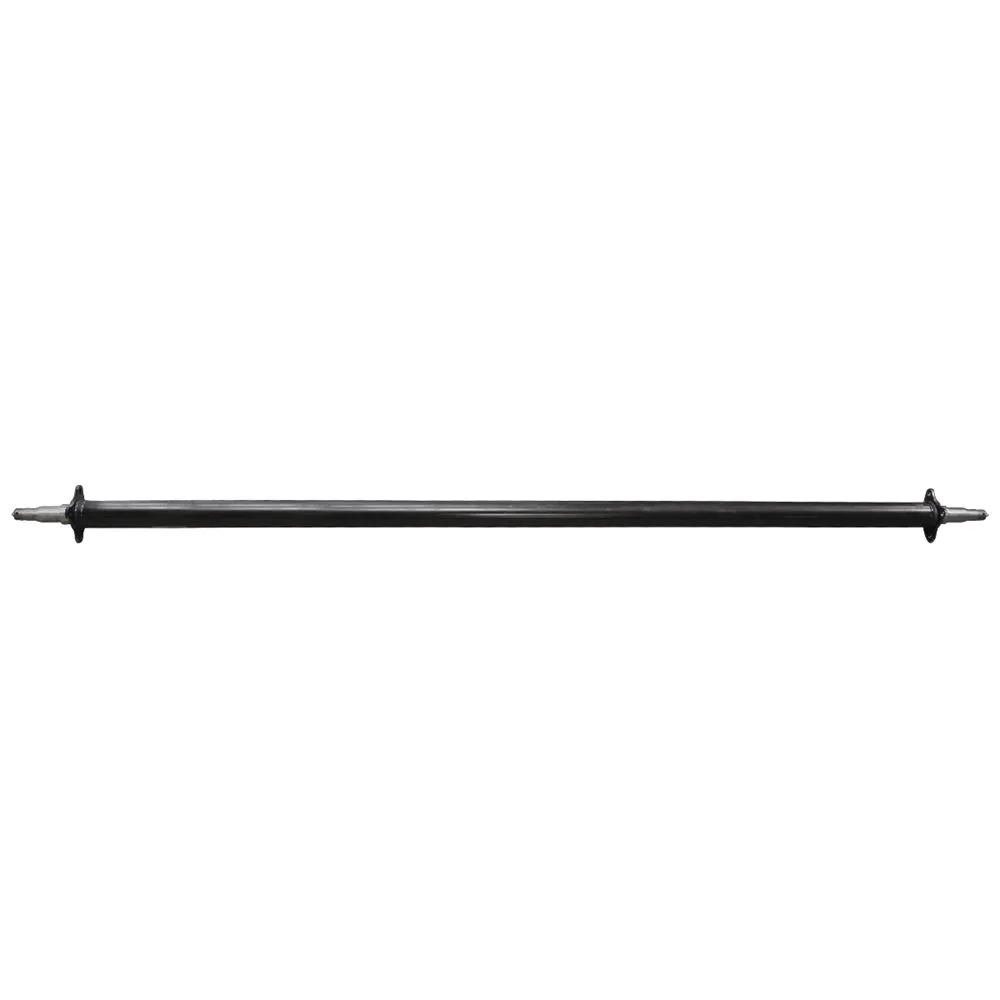Product Description
Trailer Parts Accessory Trailer Spindle Trailer Stub Axle Drop Axle
About Us
Most of our spindles are used in the manufacturing of or as replacement parts for various load caring uses including: Utility trailers, ATV trailers, farm trailers, motorcycle trailers, windmills, log splitters, lawn mowers , self-propelled agriculture equipment, and many more areas. Send us your sketch, plan, drawing, or dimensions and we will be happy to assist you. email or call us today for a free and a detailed quote.
About product
1.Material : Steel alloy
2.Surface Treatment : Anti-rust Oil
3.Packaging:Euro-standard Veneer Case of 1200mm*800mm*900mm
4.Process:forged , standblasting, packaging,delivery
5.Most of our products made of carbon steel, like 1035,1045,35CrMo,42CrMo,40Cr,ect
6.Also can follow your info,made by stainlee steel , and other special materials
Packing & Delivery
Our products are all packed in wooden cases to ensure zero damage. If customers have specific requirements for the packaging, we will gladly accommodate. The products will be sent to you within 30 days and we will arrange everything from the initial consultation to the delivery of your chosen port anywhere the world.
Packing Details :plywood case + Steel pallet
We can also customize the packing method according to customers’ needs.
Suitable for seaway transportation
| Processing Object: | Metal |
|---|---|
| Molding Style: | Forging |
| Molding Technics: | Forging |
| Application: | Machinery Parts |
| Material: | Steel |
| Heat Treatment: | Quenching |
| Customization: |
Available
| Customized Request |
|---|

How do trailer axles enhance the overall towing experience and safety?
Trailer axles play a significant role in enhancing the towing experience and safety in several ways:
- Load Distribution: Axles are strategically positioned to distribute the trailer’s load evenly. Proper load distribution prevents swaying, fishtailing, or trailer instability, ensuring a safer towing experience.
- Weight-Bearing Capacity: The load-bearing capacity of trailer axles is designed to handle specific weight limits. This capacity is crucial for safe towing, preventing overloading that can lead to accidents.
- Control and Stability: Axles with adequate weight capacity and the right placement contribute to better control and stability. They minimize the risk of losing control of the trailer, especially during sudden stops or maneuvers.
- Braking Systems: Many trailer axles are equipped with integrated brake systems or are compatible with trailer brakes. Braking systems enhance safety by allowing the driver to control the trailer’s speed and reduce braking distance.
- Suspension: Trailer axles often feature suspension components that absorb shocks and vibrations, improving the ride quality and overall control. This minimizes the risk of cargo shifting during transit.
- Maneuverability: Properly configured axles improve a trailer’s maneuverability, making it easier to navigate tight corners, reverse, and park. This is especially important for drivers when towing in crowded or confined spaces.
- Adaptability: Different axle types are designed for specific applications, whether for standard road use, off-road adventures, or marine environments. Using the right axles for the intended purpose enhances safety and performance.
- Corrosion Resistance: Trailers equipped with axles made from corrosion-resistant materials, such as galvanized or aluminum axles, are better suited for marine and coastal regions. They maintain their structural integrity and safety features even in corrosive environments.
- Load Balance: The axles’ load-balancing capabilities contribute to better trailer balance. Proper balance prevents overloading on one side and minimizes the risk of rollovers or accidents.
- Compliance with Regulations: Trailer axles must meet legal weight limits and safety standards. Ensuring compliance with these regulations is essential for safe and legal towing.
In summary, trailer axles are integral to a safe and enjoyable towing experience. They support load distribution, stability, control, and various safety features that prevent accidents and mishaps during towing.

What are the key considerations when selecting the right trailer axle for a specific application?
Choosing the appropriate trailer axle for a specific application involves several critical considerations:
- Weight Capacity: Determine the maximum weight the axle will need to support. This includes the trailer’s payload and the weight of the trailer itself. Ensure the selected axle has a weight capacity that exceeds the application’s requirements to provide a safety margin.
- Axle Type: Select the axle type based on the application. Common types include straight axles, drop axles, and torsion axles. The choice depends on factors like ground clearance, load height, and suspension design.
- Axle Configuration: Decide on the number of axles needed. Single axles are suitable for lighter loads, while tandem and tri-axle configurations offer higher weight capacities. Multi-axle setups provide better weight distribution.
- Suspension Type: Choose the appropriate suspension system, such as leaf spring, air ride, or torsion suspension. The suspension affects ride quality, load stability, and maintenance requirements.
- Brake System: Consider the braking requirements. Larger and heavier trailers often require electric or hydraulic brakes. Ensure the axle accommodates the necessary brake system, including the brake size and type.
- Axle Material: Select the axle material, typically steel or aluminum. Steel axles are durable and cost-effective, while aluminum axles are lighter and corrosion-resistant. The choice depends on the application’s demands and budget.
- Hub and Spindle Type: Choose hubs and spindles compatible with the axle. The hub style affects the type of wheel and tire you can use, while spindle size impacts weight capacity and bearing compatibility.
- Wheel Bolt Pattern: Ensure the axle’s hub and wheel bolt patterns match to avoid compatibility issues with the wheels and tires you plan to use.
- Ground Clearance: Consider the required ground clearance for the application. Lower ground clearance may be suitable for highway travel, while off-road or specialty trailers may need increased clearance.
- Legal Compliance: Ensure that the selected axle and trailer configuration comply with local and national regulations regarding weight limits, axle spacing, and safety requirements.
- Manufacturer and Warranty: Choose a reputable axle manufacturer with a track record for quality and durability. Check the warranty and support offered by the manufacturer.
- Budget: Evaluate the budget constraints for the axle and select an option that balances cost-effectiveness with meeting the application’s needs.
By carefully considering these factors, you can select the right trailer axle that ensures safe and efficient performance for your specific application.

How does the placement of trailer axles affect weight distribution and towing?
The placement of trailer axles plays a crucial role in weight distribution and towing characteristics. There are two primary axle configurations: single axle and tandem axle, each with distinct effects:
1. Single Axle Trailers:
– Single axle trailers have only one axle positioned toward the rear of the trailer. This configuration is common in smaller utility and light-duty trailers.
– Weight Distribution: With a single axle, more of the trailer’s weight is concentrated toward the rear. This can lead to inadequate weight distribution and make the trailer prone to swaying or fishtailing during towing.
– Towing Characteristics: Single axle trailers are generally easier to maneuver and tow, making them suitable for smaller loads and shorter trips. However, they may lack stability with heavier loads.
2. Tandem Axle Trailers:
– Tandem axle trailers feature two axles placed closer together, typically with one in front of the other. This design is commonly found in larger trailers and offers several advantages.
– Weight Distribution: Tandem axles distribute the trailer’s weight more evenly. This improves stability and reduces the risk of swaying. The weight is better balanced between the axles, leading to improved control during towing.
– Towing Characteristics: Tandem axle trailers are more stable and capable of handling heavier loads. They are less prone to sway, making them suitable for long-distance hauling and larger cargo.
– Additional Features: Tandem axle trailers may have braking systems, which further enhance safety and control during towing, especially when towing heavier loads.
– Considerations: It’s important to note that the placement of axles within a trailer also affects the tongue weight (the downward force on the hitch). Proper tongue weight is essential for safe towing, and it can be adjusted by positioning the cargo within the trailer.
– Ultimately, the choice between single and tandem axles depends on the trailer’s intended use and the weight of the cargo. Tandem axle trailers are preferred for heavier loads and long-distance towing, while single axle trailers are suitable for smaller, lighter loads and shorter trips. Proper weight distribution and adherence to safety guidelines are critical for safe and stable towing.


editor by CX 2023-11-10